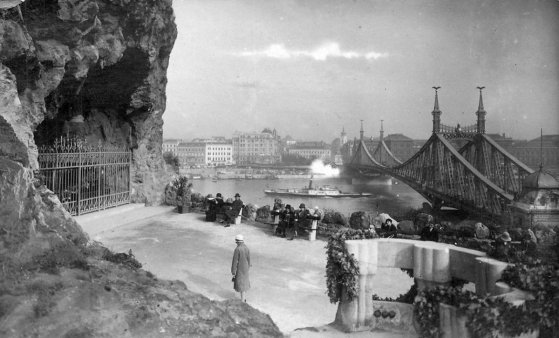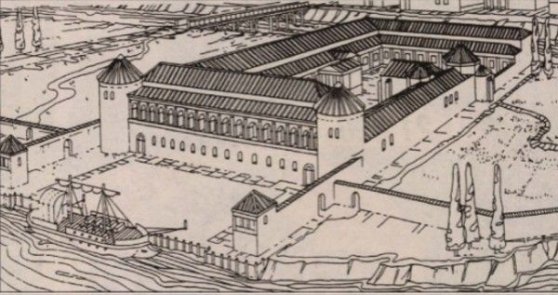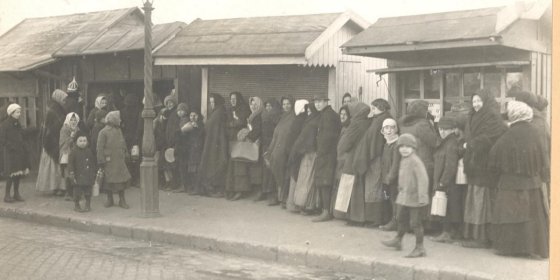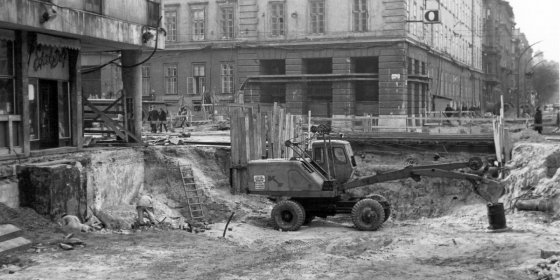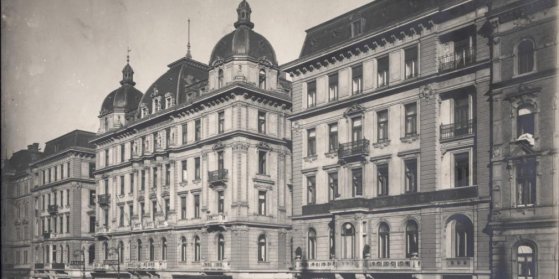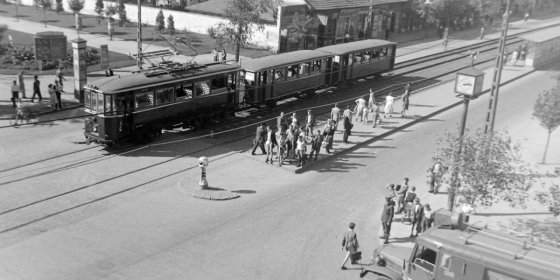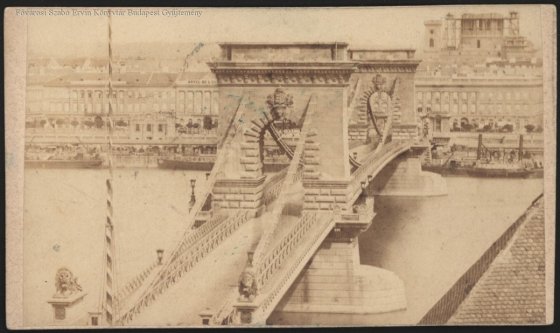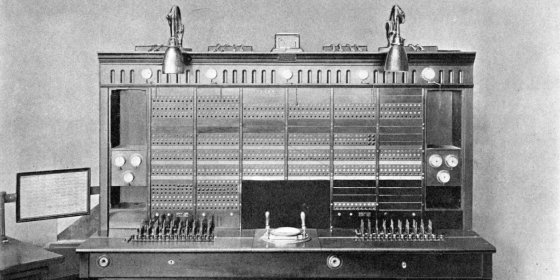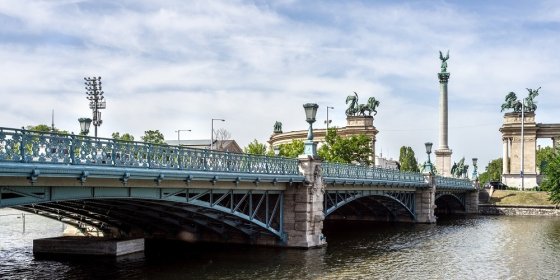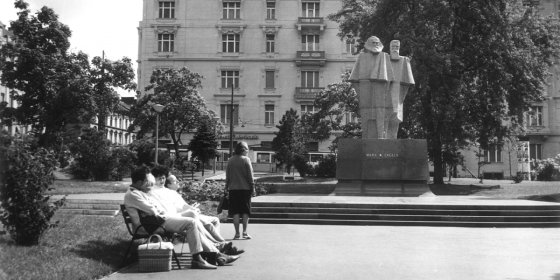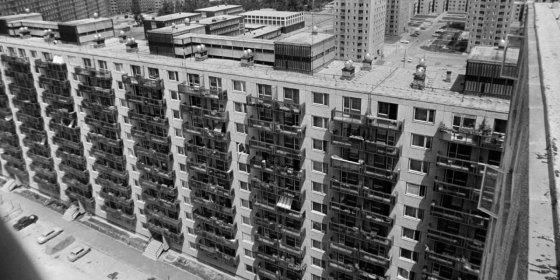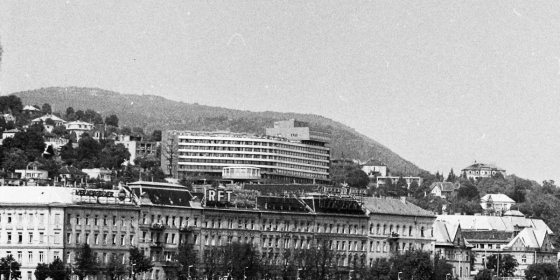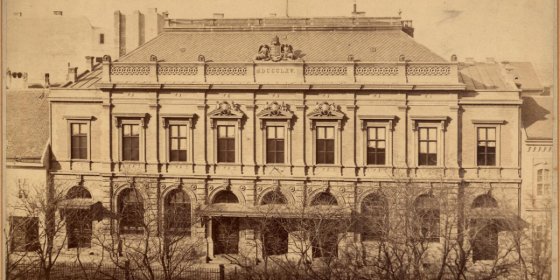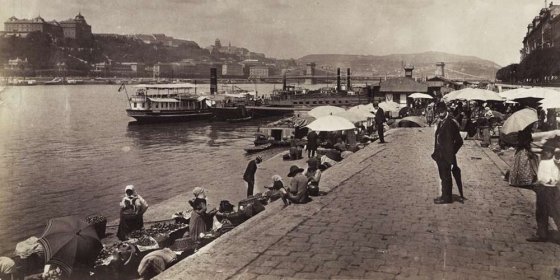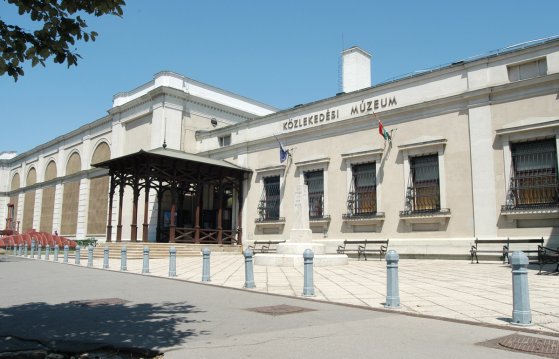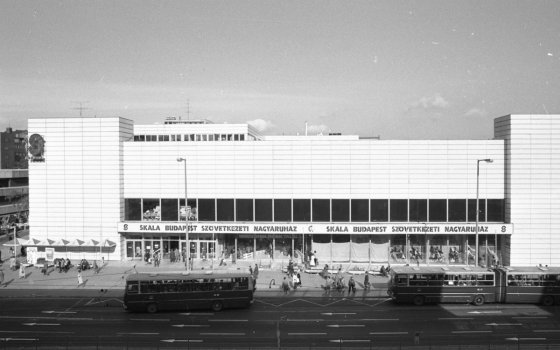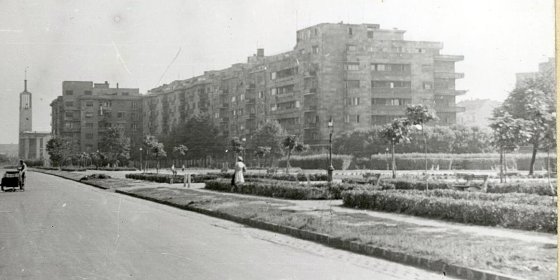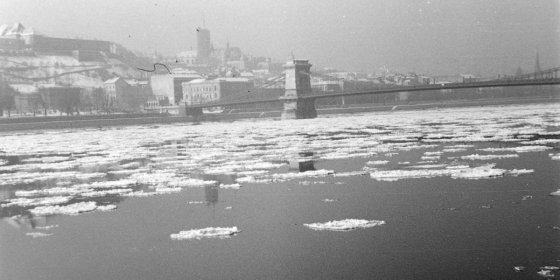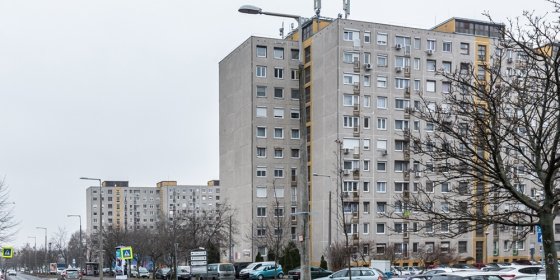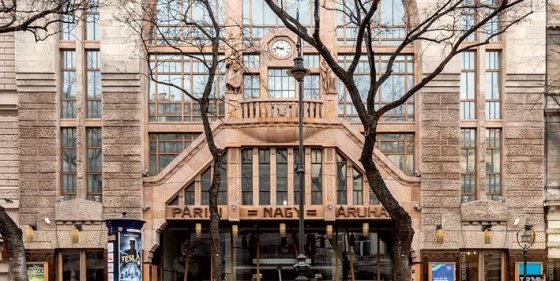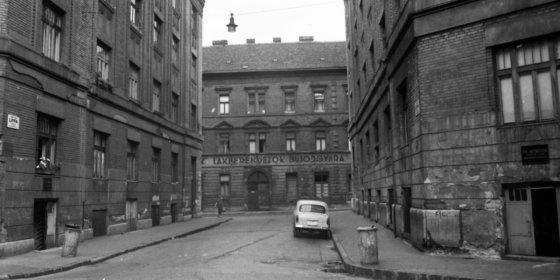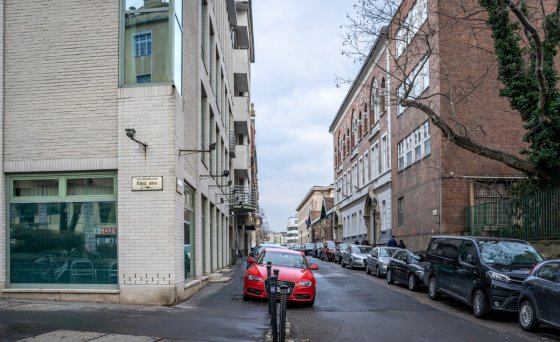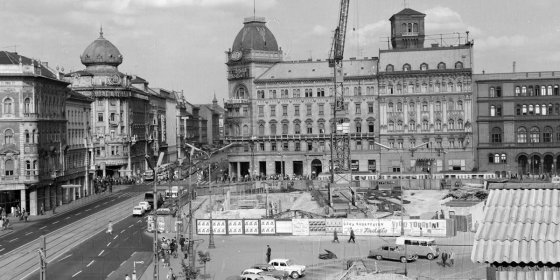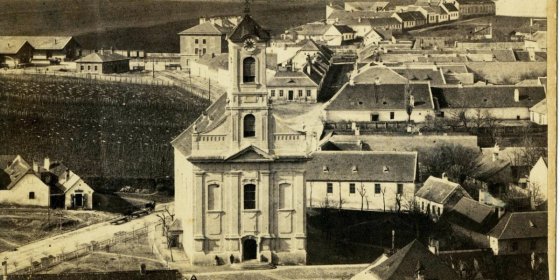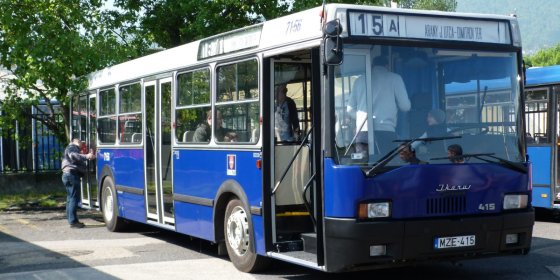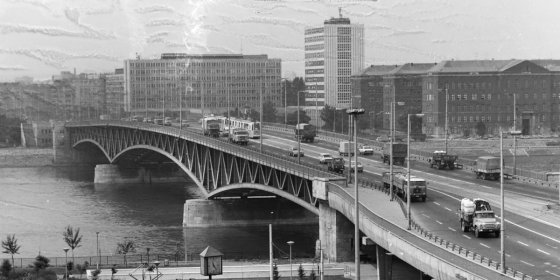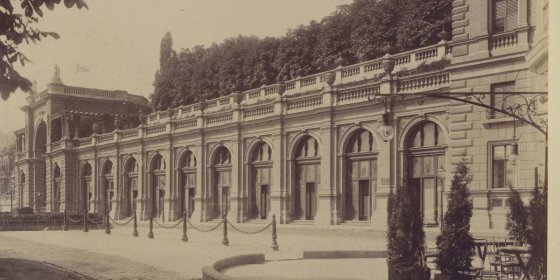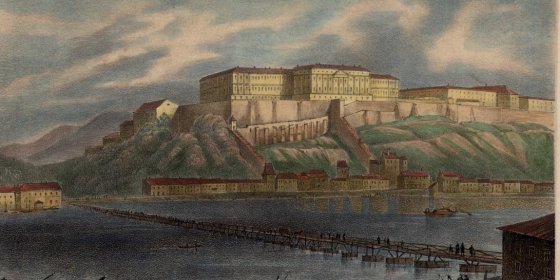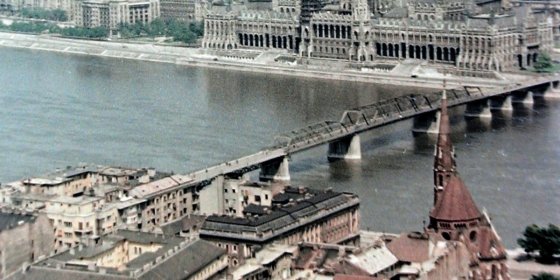 The „intertwined history” of the bridges and the city of Budapest
Which ideas and events have shaped the fate of bridges of Budapest and the cityscape? Alongside many other interesting facts, this question is also answered this newly published book by the Budapest City Archives, which introduces the history of bridges in Budapest.
The „intertwined history” of the bridges and the city of Budapest
Which ideas and events have shaped the fate of bridges of Budapest and the cityscape? Alongside many other interesting facts, this question is also answered this newly published book by the Budapest City Archives, which introduces the history of bridges in Budapest.
Csaba Domonkos
 The first statue of Saint Stephen in Budapest was completed in 1906
The first statue of Saint Stephen in Budapest was completed in 1906
May 25, 2021 at 10:00 AM
The statue of Saint Stephen has been standing in Buda Castle next to the Fisherman's Bastion for 115 years. Although the founding king of Hungary has always been highly respected in the country, the great work of Alajos Strobl was completed slowly. The first statue of King Stephen in Budapest was inaugurated in 1906 next to Matthias Church almost 40 years after it was first planned.
A place of worship in a cave – Cave Church turns 90
May 24, 2021 at 2:00 PM
One might think that the Cave Church on the side of Gellért Hill is an old church, although it is surprisingly young, not a hundred years old, as construction of the chapel itself began in 1924 and it was consecrated in 1931. During the communist era, a reinforced concrete wall closed it off from worshippers, which was only demolished in 1992.
Remains of Hadrian's palace on Hajógyári Island were found 170 years ago
May 20, 2021 at 10:00 AM
Hadrian was one of the most successful emperors of the Roman Empire. Once, he was the governor of the province of Pannonia. His governor's palace, built in the 2nd century, was in the settlement of Aquincum. The remains of the former huge building were discovered 170 years ago when the Óbuda shipyard expanded its site. The ruins have since been excavated several times on today's Hajógyári (Shipyard) Island.
Food kitchens alleviated the misery of the war in Budapest 105 years ago
May 17, 2021 at 9:00 AM
Although World War I did not directly affect the home front, Budapest was not bombed by the enemy like in World War II, but because of the battles, the capital was struggling. In 1916, the state wanted to help. Food kitchens were set up to deliver vegetable dishes and pasta to the poorer quarters of Budapest.
Construction of blue Metro Line M3 began 50 years ago
May 13, 2021 at 9:00 AM
The development of the Budapest underground network entered a new phase 50 years ago when the construction of the city’s third metro line began. Although the ideas changed a lot and the work planned for 15 years took 20, today’s Metro Line 3 is one of Budapest's most important transport corridors.
The Royal Hotel hosted the first film screening in Hungary 125 years ago
May 11, 2021 at 9:00 AM
Fortunately, the Hungarian Academy of Sciences set the date of the Hungarian conquest of the Carpathian Basin as 896, rather than the originally planned 895. In 1896, the official national millennium was celebrated with miracles such as the first domestic film screenings. The general public could see the screenings in two places: that of the Lumière brothers were held at the Royal Hotel, and Edison’s were shown in Lágymányos.
Shortest suburban railway line in Budapest turns 70
May 7, 2021 at 10:00 AM
Suburban railway lines (HÉV - helyiérdekű vasút) have been running from Boráros Square to the 21st District for seventy years. Csepel had a rapid transit connection before, with trains running on Gubacsi Bridge. The suburban railway line to Csepel is record-breaking in many aspects: it is the shortest line, the site of the most serious accident, and currently home to the oldest trains.
Neither Pest nor Buda wanted a private company to build the first bridge in Budapest – the bridge law is 185 years old
May 4, 2021 at 9:00 AM
A law promulgated 185 years ago made it possible to build the first permanent Danube bridge connecting Buda and Pest. A long debate preceded the adoption of the bridge law because neither Pest nor Buda supported a private company building the bridge, as they did not want to waive their customs rights.
Tivadar Puskás built the first Hungarian telephone exchange 140 years ago
May 3, 2021 at 9:00 AM
The first telephone exchange started operating in Budapest on May 1, 1881. Tivadar Puskás and his brother Ferenc built the equipment. Initially, the phone centre had only 25 subscribers, but its popularity grew steadily. Based on the telephone network and the telephone exchange, Tivadar Puskás's truly great invention, the Telephone Herald (Telefonhírmondó), was born and presented at the Millennium Exhibition.
Second life for the bridges of Budapest?
April 30, 2021 at 9:00 AM
Recently, an announcement was published about reusing the pieces of the soon-to-be-demolished Southern Railway Bridge in Budapest for other, smaller bridges, such as connections to Hajógyári Island. At first glance, it sounds like a rather strange idea to create a new bridge from a used one, but it is not uncommon at all, even in Budapest. There are several bridges in the capital, the elements of which were once parts of other structures.
The statue of Marx and Engels inaugurated fifty years ago
April 28, 2021 at 12:00 AM
The theoretical foundations of communism were laid by a German philosopher and a wealthy German merchant. Neither of them were workers, yet they hatched plans for a perfect state of workers. In addition to Lenin, socialism considered Marx and Engels to be the “apostles” of the system. Their portraits hang in all the most notable places and events, yet a statue of the two founders was only erected in Budapest relatively late, in 1971 on Jászai Mari Square.
First housing blocks in Újpalota completed 50 years ago
April 20, 2021 at 9:00 AM
One of the largest housing estates in Budapest can be found in Újpalota, the first apartment of which was completed over 50 years ago, in the spring of 1971. 12,752 apartments were planned originally, but 15,500 were completed by the second half of the 1970s. An average of 5 people lived in each of the 15th District's prefabricated flats.
The SZOT Resort on Rózsadomb opened 50 years ago – Cable-car for guests never completed
April 18, 2021 at 9:30 AM
One of the most controversial buildings in Budapest, the SZOT Resort on Rózsadomb, has been part of the cityscape for half a century. The huge 114-meter-long building of the health resort once accommodated up to 500 guests at a time, who were transported to the nearby Lukács Baths by a minibus. Contrary to the original plans, neither a cable car nor a lift was built. The gigantic house later stood empty for decades, but today it has been reborn as a luxury residential building.
Members moved to the Former House of Representatives 155 years ago
April 15, 2021 at 10:30 AM
Two buildings in Pest were built for the national assembly. It is well-known that the vast Parliament Building on the Danube banks, completed in 1902, is one of the largest buildings in the world, houses the National Assembly. However, the Neo-Renaissance palace, the Former House of Representatives in Bródy Sándor Street, designed by Miklós Ybl, which elected members began using 155 years ago, is older than its grand sister.
The longest monuments in Budapest: the history of the embankments
April 12, 2021 at 9:30 AM
Until the middle of the 19th century, anyone could walk down to the undeveloped, muddy banks of the Danube, but during a flood, nothing stood in the way of the water. The 12-kilometre-long embankments along Budapest's Danube Banks have become an essential part of the cityscape and protect the capital from floods. In connection with the freshly announced reconstruction of the Pest embankment, Pestbuda presents the history of these magnificent structures.
Museum of Transport opened 55 years ago after post World War II repairs
April 5, 2021 at 1:00 PM
After a more than a two-decades-long forced break, the Museum of Transport opened in City Park on 2 April 1966. During World War II, in 1944, several bombs hit the building. Although the most valuable works of art were saved, the destruction was still immeasurable: in addition to the building, the bombing also caused significant damage to the collection.
The first modern shopping centre in Budapest – The Skála store in Buda opened 45 years ago
April 2, 2021 at 9:00 AM
There was a store in Buda that brought new colour and new quality to the slow socialist state store system. The modern design, the huge floor space of more than 22,000 square metres, and the relative abundance of goods contributed to the rapid rise in the popularity of the Skála store, which opened 45 years ago on 2 April 1976.
Szent István Park turns 85 – A parquet factory once sprawled across the greens
April 1, 2021 at 9:00 AM
The green that opened on 1 April 1936 was originally called Lipótváros Park, then Rakovszky Park. It was given its current name in 1937 and has been called Szent István Park ever since. The site of the beautiful ornamental garden was once a parquet factory, and its construction was initiated in the 1920s by the President of the Public Works Council at the time, Iván Rakovszky. Újlipótváros' most popular park is 85 years old.
A blast saved Budapest from icy floods 65 years ago
March 16, 2021 at 10:00 AM
The sad year of 1956 brought other disasters than the brutal defeat of the revolution. Pestbuda has already reported on the earthquake in January, but another disaster struck the country in March. A huge flood wreaked havoc south of Budapest, and special measures were needed to protect the capital. Ice blocks were blown up near Kossuth Bridge.
Construction of Gazdagrét confirmed 40 years ago
March 10, 2021 at 9:00 AM
Gazdagrét is unique among the housing estates in Budapest. Located in the Buda hills, the area has clear borders and remains a popular place to live today. A popular soap opera followed its life for years.
Paris Department Store on Andrássy Avenue opened 110 years ago
March 3, 2021 at 11:00 AM
The Paris Department Store at 39 Andrássy Avenue opened to the public 110 years ago, on 3 March 1911, after its previous building at 38 Rákóczi Road burned down, and the store moved to its new location. However, the new building of the Paris Department Store was larger and more luxurious than its predecessor. It was opened to shoppers until the end of World War II.
Fifty years ago, humans weren’t the most numerous inhabitants of Budapest
February 26, 2021 at 9:00 AM
Rats are one of the most unpopular animals. However, they are also dangerous as they spread countless diseases. In the past, every big city was teeming with these rodents, and even today, only a few can say they are almost rat-free. Budapest is one of them.
A street in Buda and a mountain in Australia – Who was Tadeusz Kościuszko?
February 23, 2021 at 11:30 AM
Kosciuszko Tádé Street in the 1st District is generally well-known. However, few people know who the person behind the name was and why the street known as Koronaőr Street before 1948 was renamed in his honour. However, the hero of Polish independence, Tadeusz Kościuszko, born 275 years ago, was so well known in his day that in addition to a street in Buda, the highest mountain in Australia was named after him, and his statue was even erected in Washington.
A blast connected the two tunnels – Tunnels of M2 metro completed 60 years ago
February 16, 2021 at 9:00 AM
Building a metro was no easy feat in 1960s Budapest. During the construction of the M2 line, workers battled liquefied sand and groundwater but also found interesting artefacts, such as the skeleton of a Rhinoceros and a mammoth tooth. The large-scale development project also demanded some sacrifices. The building of the National Theatre was destroyed, and Rókus Hospital almost collapsed – though the latter was eventually saved. The tunnels were built from two different directions. The section built from Keleti Railway Station was connected to another built from Blaha Lujza Square with explosives sixty years ago.
Cut in half and expanded – The not so everyday history of a Church
February 4, 2021 at 8:30 AM
There is an almost average 18th-century church, the history of which is much more exciting than its simple yellow walls would suggest. It was once cut in two and expanded – and it also served as the venue of a famous wedding 185 years ago. The happy couple were not everyday people. The bride was the widow of Károly Zichy, and the groom was István Széchenyi.
Another Icarus retires – The 415 family never became popular in Budapest
February 1, 2021 at 9:00 AM
Budapest has just bidden farewell to another bus type: the last Ikarus 415 was recently retired from service. The model appeared in Budapest in 1987 but never became dominant, even though the factory had planned to replace the classic 200 series with the new design. Rather, its role was similar to a substitute player: rarely allowed to shine.
Changes planned for the area around Buda bridgehead of Petőfi Bridge
January 26, 2021 at 11:00 AM
Goldmann György Square in the 11th District will be completely transformed. The university is planning to construct new buildings in place of the V2 building and the canteen that have stood empty for years. A zero-emission research centre has been planned for the site. Dive into the history of this unique site with PestBuda!
Franz Joseph supported exhibition to showcase the most famous Hungarians
January 15, 2021 at 11:00 AM
A long-awaited exhibition opened in the Castle Garden Bazaar 135 years ago. Entitled Portrait Gallery of Hungarian History it collected depictions of the most famous Hungarians in chronological order. The effort was supported from the highest levels, and its creation was seen as not only a cultural but academic endeavour.
Buda Castle and drinking water: Water pumps designed by Adam Clark completed 165 years ago
January 12, 2021 at 12:00 PM
A settlement needs water. And Buda Castle had various water supplies even in the middle ages. The city was supplied with water from the springs of Svábhegy and the Danube. Until the middle of the 19th century, pumps powered by animals pushed the water to the top of the hill. The first engine-powered pumping station in Buda was established 165 years ago, opening in 1856. Its designer was Adam Clark, the engineer that led the construction of Chain Bridge.
The eight-month miracle – Kossuth Bridge completed from scraps 75 years ago
January 10, 2021 at 12:00 PM
Previous articles on PestBuda have detailed how the retreating German forces destroyed all Danube bridges in Budapest. After the war, a series of temporary structures were erected to connect the battle-torn city’s two halves. However, it was obvious that a somewhat permanent structure would be needed. The result was Kossuth Bridge.
More articles
 The „intertwined history” of the bridges and the city of Budapest
Which ideas and events have shaped the fate of bridges of Budapest and the cityscape? Alongside many other interesting facts, this question is also answered this newly published book by the Budapest City Archives, which introduces the history of bridges in Budapest.
The „intertwined history” of the bridges and the city of Budapest
Which ideas and events have shaped the fate of bridges of Budapest and the cityscape? Alongside many other interesting facts, this question is also answered this newly published book by the Budapest City Archives, which introduces the history of bridges in Budapest.
 The Bridge Report, which brought a turning point in the history of Budapest
A travel report that changed the history of Pest and Buda, as well as Hungary. The little book contributed to the change of half a thousand years of legal customs and the implementation of an investment of unprecedented size and technical quality. This book was The Bridge Report [Hídjelentés in Hungarian].
The Bridge Report, which brought a turning point in the history of Budapest
A travel report that changed the history of Pest and Buda, as well as Hungary. The little book contributed to the change of half a thousand years of legal customs and the implementation of an investment of unprecedented size and technical quality. This book was The Bridge Report [Hídjelentés in Hungarian].
 Drama on the university wall - The heroic monument was planned 95 years ago
In the constant hustle and bustle of the Egyetem Square in Pest, the students may not even notice the monument that decorates the short section of wall between the church and the central building of ELTE. However, it commemorates their predecessors, the heroes who fought for their country in World War I, and those who heroically helped them. The first design of the dramatically collapsing soldier was born in 1928, ninety-five years ago.
Drama on the university wall - The heroic monument was planned 95 years ago
In the constant hustle and bustle of the Egyetem Square in Pest, the students may not even notice the monument that decorates the short section of wall between the church and the central building of ELTE. However, it commemorates their predecessors, the heroes who fought for their country in World War I, and those who heroically helped them. The first design of the dramatically collapsing soldier was born in 1928, ninety-five years ago.

